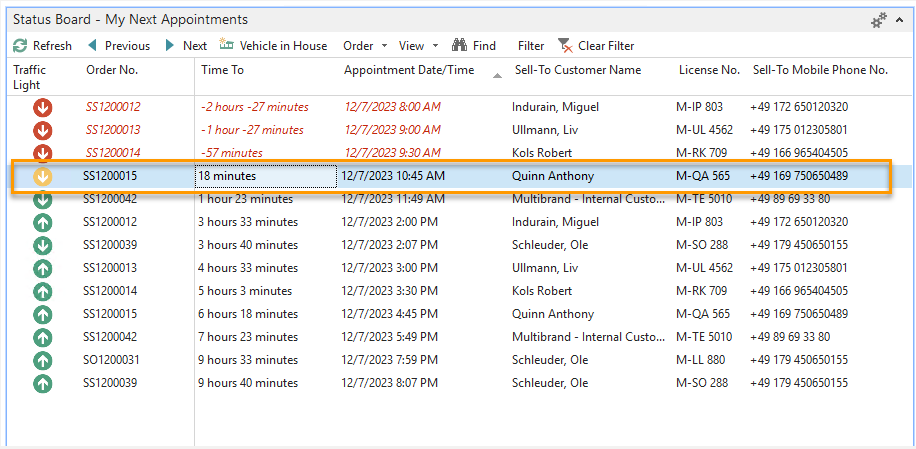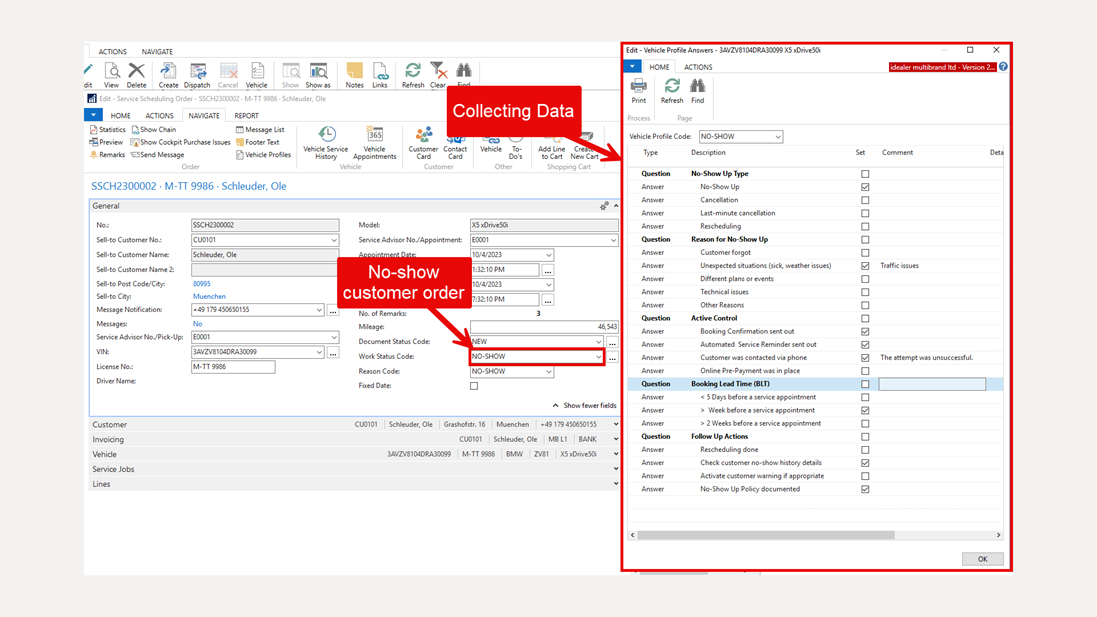No more no-shows.

How can dealers minimize the number of customers who fail to show up for their scheduled service appointments?
It goes like this: The workshop operates using modern scheduling systems with excellent organization, follows high-quality standards, and strives for excellent customer service.
AND customers do not show up for their service appointments. Such situations are frustrating for everyone involved in the workshop and cause loss of revenue, delays, and wasted resources.
During one of my visits to dealerships, we discussed challenges related to resource workshop planning with service managers and how to optimize service processes to achieve the best outcomes and high resource utilization. We particularly examined whether local or centralized workshop planning fits their DNA and the pros and cons of each (Later, I wrote an article about it L1).
At one of the management meetings, we discussed the frustrating effect of no-show customers on their resource workshop planning. According to the Service Managers, around 10% of customers fail to attend service appointments. It made me more aware of that issue and encouraged me to examine it more deeply.
- What steps must dealers take to reduce the probability of no-shows?
- Does good practice exist to handle such situations effectively?
- Can we measure the impact and forecast it?
In my next article, I would like to talk about this topic and dive in a bit deeper.
I have added a few genuine examples to make the article more engaging.
What is a no-show?
First things first, a no-show refers to a situation where a customer fails to attend a scheduled service appointment without prior notice. Such situations disrupt workshop scheduling and negatively impact productivity and effectiveness if not managed actively.
Understanding the problem’s scale, size, and impact is crucial before tackling it. Data is the KEY because dealers can build their "no-show algorithms" and utilize their processes accordingly.
Here, Dealer Management Systems (DMS) must provide a functional base to support background tracking of no-show customers quickly, intuitively, and with minimum user interventions. The exercise aims to gather dealer data and generate a forecast. Secondly, dealers should establish and monitor KPIs.
What are the KPI options:
- Comparison between show-up and no-show customer visits.
- Lost Sales Revenue causing no-show.
- Lost (Sold) Time causing no-show.
Variables:
- Day or Time of visit,
- Booking Lead Time BLT (Time needed to get service appointment).
- Type of service appointments
- Seasonal factors
- Type of the customer, car, and other details.
After setting the KPIs, dealers must focus on implementing measures to control them effectively.
Dealers rely on service appointments and must actively maintain them.
There are two distinct categories of methods available. Let me explain them.
Active features are those that prevent no-show situations before they happen.
Passive features - reduce the impact of the event.
Active features to maintain service appointments.
These are the most popular ones:
- Booking Confirmations
Regardless of the booking channel, dealers should send an online appointment booking confirmation with all important booking details.
- Service Reminders
It's common for customers to forget their scheduled service appointments if they book them too far in advance. Automated service reminders assist dealers in reminding customers about upcoming visits at the optimal time, mostly electronically, using messaging applications. Dealers should include the appointment time, location, and special instructions.
- Multiple Communication Methods
Although messages are a commonly used option, some customers have better choices. Offering multiple communication methods, such as email, SMS, or even phone calls, dealers can reach customers in the way they prefer.
- Service Confirmations
After sending automated service reminders, dealers should examine service appointments that the customers still need to confirm.
A simple rule can be applied: no call (confirmation), no show.
- Rescheduling Online
Depending on the messaging app or communications channel, it is beneficial to include links to "Confirm," "Reschedule," or "Cancel" the service appointment. Some messaging applications offer an option to call: "I am late," which is a superb idea to include.
- Online Prepayment
With access to modern digital technology and electronic payment, this is one of the excellent ways to reduce the risk of not showing up. Dealers should offer discounts for prepayment, which encourages booking appointments in advance and paying attention to them.
- Key Lookers
Customers can drop off and pick up their car keys 24/7 using a contactless tool. This service offers added convenience for customers who prefer out-of-hours assistance.
Dealers may look for other options that are worth considering.
- Pick-up vehicle service.
- Late cancellation or missed service appointment fees.
- Flexible cancellation policy.
- Motivate customers to visit the dealership by offering a replacement vehicle one day prior to their visit.
Despite taking preventive measures, some customers still miss service appointments. That's life. Dealers must measure it and get it under control. Here, I called them "passive" features, which are utilized to maintain service appointments.
Passive features - reduce the impact of no-shows.
- Managing the reception process and mitigating potential delays
Get early indicators of no-shows; every potential customer delay increases the probability of no-shows. Contact customers, validate their situation, and be ready for plan B. Visualization like a Status Board helps dealers quickly identify delays and take necessary actions by displaying customer appointments on a digital board.

incadea.dms > Status Board
- Overbooking or double-booking rule
During my visit to a large truck workshop, I observed how they efficiently manage their resources. They typically overbook their daily workshop capacity by 15-20%. I discovered a double-booking rule was in place to combat no-shows.
- Diversity of service appointments
A certain percentage of workshop capacity, usually around 5-10%, is typically reserved for walk-in customers. Other dealers allocate workshop capacity for internal vehicle work. It is essential to plan and manage the size of the internal work pool proportionally, as it serves as a buffer for no-shows that can be utilized if necessary. The variety of service appointment types per day allows flexible scheduling adjustments to recover from no-shows faster.
- Find the reason.
The most critical aspect is determining the reason for the no-shows and adjusting preventive mechanisms. Some dealers keep track of customers who frequently do not attend their service appointments and enforce rules such as requiring prepayment in advance.

incadea.dms > no show tracking
- Inform customers that "they have missed it."
Send a message to the customer who missed their service appointment with an option to reschedule.
As I mentioned, Dealers rely on service appointments and must actively maintain them. My article outlines active and passive management options.
Thank you for taking the time to read the article. If you require any additional information, please do not hesitate to contact me.
Stay in touch!
Dr. Juraj Hanus
SME DMS | juraj.hanus@incadea.com
References: